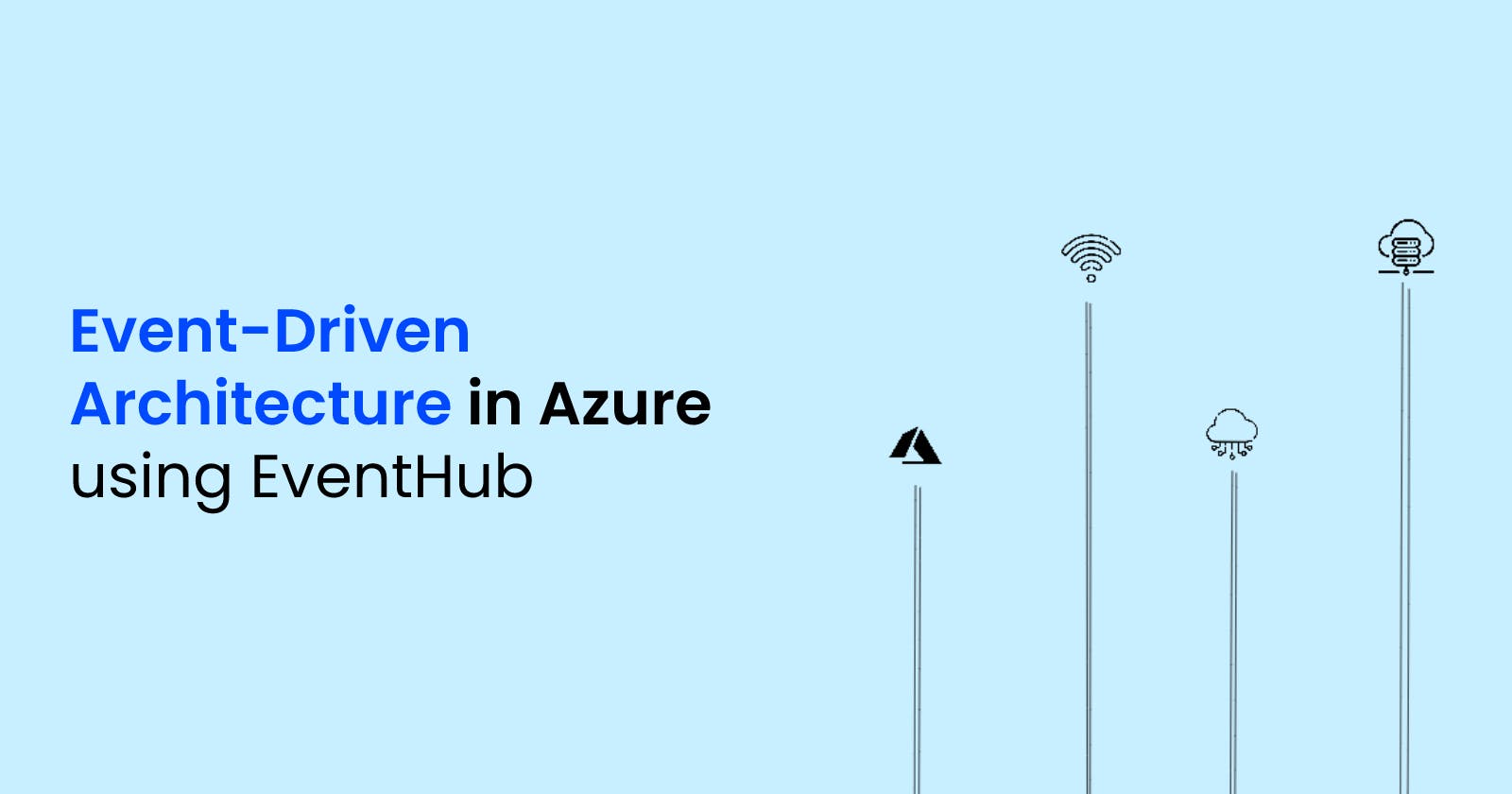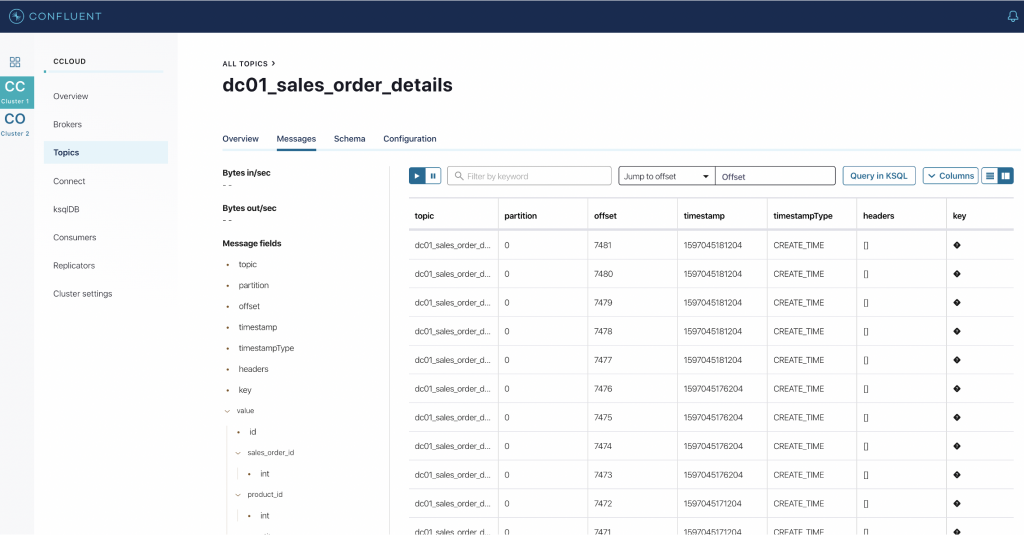Understanding Event-Driven Architectures
Event-driven architectures (EDA) represent a powerful paradigm shift in software design. They revolve around the concept of events: significant occurrences that trigger actions within a system. These events originate from event sources, such as user interactions, sensor readings, or database updates. Event consumers, often microservices or functions, react to these events by processing them asynchronously. A message broker acts as an intermediary, facilitating communication between sources and consumers. Consider a simple e-commerce example: an order placement generates an “OrderPlaced” event. This event triggers downstream processes, such as inventory updates and shipping notifications. The benefits of EDAs are significant. They promote scalability by allowing independent scaling of components. Resilience is improved due to the loose coupling between services; the failure of one component does not necessarily bring down the entire system. Loose coupling also simplifies development and maintenance, boosting agility. EDAs are best suited for systems with high throughput, asynchronous operations, and a need for independent scalability. Azure provides a comprehensive suite of services to build robust and scalable EDAs, seamlessly integrating with existing cloud infrastructure.
The core principle of an EDA lies in its decoupled nature. Event producers don’t need to know about consumers. They simply publish events to the message broker. Consumers subscribe to events of interest. This asynchronous communication allows for flexibility and scalability. Traditional request-response architectures can become bottlenecks under high load, whereas an event-driven approach thrives in such environments. The choice of messaging system within an azure event driven architecture is critical; factors such as message ordering, throughput requirements, and durability significantly influence this decision. Azure offers various options, each tailored to specific needs. For example, the choice between using Azure Service Bus for guaranteed delivery and Azure Event Hubs for high-throughput data streaming depends on the application’s specific characteristics and priorities. Effective event schema design is also vital to ensure interoperability and maintainability across different parts of the system. A well-defined schema guarantees that events are correctly interpreted and processed, preventing inconsistencies and errors.
Choosing the right Azure service is vital for building a successful azure event driven architecture. Each service offers unique capabilities. For instance, Azure Event Grid excels at reacting to specific events, like blob storage updates or resource changes. Azure Service Bus is ideal for scenarios requiring reliable messaging with guaranteed delivery, while Azure Event Hubs excel at ingesting and processing large volumes of telemetry data. Understanding these distinctions is critical to building an efficient and scalable architecture. The architecture’s design also impacts cost-efficiency. By selecting the right messaging system and implementing strategies for efficient processing and resource utilization, you can minimize costs while ensuring performance. Efficient message handling, retry mechanisms for failures, and optimized event processing logic all play a part in building a cost-effective and high-performing azure event driven architecture. The scalability of an EDA is inherent to its design; however, careful planning is needed to ensure seamless scaling and prevent performance bottlenecks as the volume of events increases. This involves aspects such as partition management in Azure Event Hubs or proper scaling of Azure Functions. A well-architected azure event driven architecture offers significant benefits, including enhanced scalability, resilience, and maintainability.
Azure Services for Event-Driven Architectures: A Comprehensive Overview
Azure offers several powerful services to build robust and scalable azure event driven architectures. Azure Event Hubs excels at ingesting and processing high-volume, high-velocity data streams. It’s ideal for scenarios like telemetry data ingestion or real-time analytics. Event Hubs uses partitions and consumer groups for parallel processing, ensuring efficient handling of massive event volumes. This makes it a cornerstone for many high-throughput azure event driven architecture implementations.
Azure Service Bus provides reliable messaging with features like message ordering, guaranteed delivery, and message sessions. Unlike Event Hubs, Service Bus prioritizes message reliability and ordering, making it suitable for critical business processes or financial transactions where data integrity is paramount. Service Bus also supports advanced features for complex orchestration scenarios within an azure event driven architecture. The choice between Event Hubs and Service Bus depends heavily on the application’s specific needs regarding throughput versus reliability.
Azure Event Grid is a fully managed, event routing service that simplifies building event-driven applications. It allows for near real-time event delivery from various Azure and non-Azure sources. Event Grid shines in building loosely coupled microservices architectures, enabling services to react to events asynchronously. Azure Functions, a serverless compute service, integrates seamlessly with these messaging services. Functions allow developers to write code that responds to events published to Event Hubs, Service Bus, or Event Grid, creating an efficient and cost-effective implementation of an azure event driven architecture. Choosing the right service depends on factors like event volume, delivery guarantees, and the complexity of event processing logic. Careful consideration of these factors is essential for designing a successful azure event driven architecture.
Designing Your Azure Event-Driven Architecture: Key Considerations
Implementing a robust and scalable azure event driven architecture requires careful planning. Event schema design is paramount. A well-defined schema ensures consistent data interpretation across all services within the architecture. Consider using schema registries like Azure Schema Registry for centralized management and versioning. Choosing the right messaging service is crucial and depends on specific needs. Azure Event Hubs excel at high-throughput scenarios, while Azure Service Bus prioritizes reliable messaging with features like guaranteed delivery and message ordering. For less demanding scenarios, Azure Event Grid’s publish-subscribe model offers simplicity and efficiency. The selection depends heavily on the throughput, ordering, and durability requirements of your application.
Resilience and scalability are key considerations in any azure event driven architecture. Implement mechanisms for handling failures and retries. Dead-letter queues can capture messages that fail processing, allowing for later review and troubleshooting. Utilize Azure’s autoscaling capabilities to ensure your services can handle fluctuating workloads. Proper error handling and retry logic are vital. Exponential backoff strategies prevent overwhelming the system during temporary outages. Monitoring tools like Azure Monitor provide insights into the health and performance of your architecture. These insights help optimize resource allocation and identify potential bottlenecks. Designing for fault tolerance, leveraging features like idempotency for message processing, ensures data integrity even in the face of failures.
Security is a crucial aspect of any azure event driven architecture. Implement appropriate authentication and authorization mechanisms to control access to your services and data. Utilize Azure Active Directory for managing user identities and access control. Secure your messaging services using appropriate encryption and access policies. Regular security assessments help identify vulnerabilities and ensure compliance with industry standards. Remember to encrypt data both in transit and at rest. Regularly review and update your security policies to adapt to evolving threats. Building a secure azure event driven architecture from the ground up helps avoid future vulnerabilities and maintain data integrity. This proactive approach is key to maintaining data security and user trust.
How to Implement a Serverless Event-Driven Architecture with Azure Functions
This section provides a practical guide to building a serverless event-driven application using Azure Functions. Azure Functions, a core component of the azure event driven architecture, excel at responding to events asynchronously. This example demonstrates processing images uploaded to Azure Blob Storage. The function will be triggered by an event from Azure Event Grid. This approach leverages the scalability and cost-effectiveness of serverless computing within the broader context of an azure event driven architecture.
First, create an Azure Storage account and an Azure Event Grid topic. Configure the Event Grid topic to subscribe to blob creation events in your storage account. Next, create an Azure Function App. Choose a suitable runtime, such as Python or Node.js. The function’s trigger will be Azure Event Grid, specifically listening for the blob creation events. The function code will then receive the event data, which includes the URI of the newly uploaded blob. Your function code retrieves the image from the URI, processes it (e.g., resizing, watermarking), and potentially saves the processed image to a different storage location. Remember to handle potential exceptions gracefully, ensuring robust error handling within your azure event driven architecture.
Deploying the Azure Function can be done through various methods. The simplest approach uses the Azure portal’s deployment options. Alternatively, you can utilize Azure DevOps for continuous integration and deployment (CI/CD), automating the deployment process. This ensures seamless updates and reduces the risk of errors. Using the Azure portal allows for direct upload of your function code. Remember to configure appropriate access keys and permissions for your storage account and function app. Monitoring the function app’s execution, including logging and metrics, is vital for a healthy azure event driven architecture. Azure Application Insights provides excellent tools for monitoring and debugging. This example showcases a basic yet powerful implementation of an azure event driven architecture using serverless technologies. The flexibility and scalability provided by Azure functions within an azure event driven architecture make it a compelling choice for many applications.
Integrating Azure Event Hubs for High-Throughput Data Streams
Azure Event Hubs excels in handling massive volumes of data ingested at high velocity. This makes it a cornerstone of many robust azure event driven architectures. Its strength lies in its ability to process event streams that other messaging services might struggle with. Event Hubs partitions the incoming data into smaller, manageable units, allowing for parallel processing by multiple consumers. This dramatically increases throughput and scalability, critical for applications dealing with telemetry data, IoT device streams, or other high-volume event sources. The architecture’s design ensures minimal latency, ensuring near real-time processing of incoming data within the azure event driven architecture.
Unlike Azure Service Bus, which prioritizes guaranteed delivery and message ordering, Event Hubs prioritizes throughput. This difference is crucial when choosing a messaging service. While Service Bus is ideal for scenarios requiring strong reliability and strict ordering (e.g., financial transactions), Event Hubs is the preferred solution when high volume and speed are paramount, even if some message ordering or guaranteed delivery is sacrificed. The ability to scale horizontally by adding more partitions and consumer groups further enhances its capacity to handle extreme data volumes within the larger context of an azure event driven architecture. This horizontal scalability allows the system to adapt dynamically to changing demands, automatically increasing processing power as needed. This adaptability is key for building resilient and scalable applications.
Consumer groups in Azure Event Hubs provide a mechanism for multiple applications or services to consume the same stream of events concurrently. Each consumer group maintains its own offset within the stream, allowing independent processing. This feature is instrumental in building a distributed, scalable azure event driven architecture. For example, a single Event Hub instance could feed real-time data to a dashboard application, a batch processing job, and a machine learning model simultaneously, each independently tracking its consumption progress. This efficient use of resources ensures that the entire azure event driven architecture benefits from efficient and robust data management.
Leveraging Azure Service Bus for Reliable Messaging and Orchestration in Azure Event Driven Architecture
Azure Service Bus excels in scenarios demanding reliable messaging within an azure event driven architecture. Unlike Azure Event Hubs, which prioritizes high throughput, Service Bus emphasizes guaranteed message delivery and strict ordering. This makes it ideal for mission-critical applications where data integrity is paramount. Features like message sessions enable complex orchestration, facilitating the management of related messages as a single unit. Service Bus ensures that each message is processed exactly once, preventing data loss or duplication, a crucial aspect of a robust azure event driven architecture.
Consider a financial transaction system. The need for precise ordering and guaranteed delivery is absolute. Azure Service Bus guarantees each transaction is processed sequentially and completely. This contrasts with the higher-throughput, potentially out-of-order delivery approach of Event Hubs. Service Bus’s capabilities extend to sophisticated orchestration scenarios. Imagine a multi-step business process spanning several microservices. Service Bus can manage the message flow between these services, ensuring reliable communication and coordination. This enables the creation of complex, yet dependable workflows within a scalable azure event driven architecture. Its message broker capabilities also support message filtering and routing, simplifying message management within your system.
Furthermore, Service Bus offers features such as message deduplication and scheduled messaging, enhancing its suitability for complex and demanding applications. The ability to schedule messages enables efficient management of time-sensitive tasks. These capabilities, combined with its support for various messaging protocols (AMQP, MQTT, and HTTP), make Azure Service Bus a versatile component in various azure event driven architecture designs. For applications prioritizing reliability, strict message ordering, and complex orchestration capabilities, Azure Service Bus provides a robust and dependable solution. Choosing the correct messaging service is crucial for building a successful azure event driven architecture, and Service Bus is a powerful choice when reliability is the priority. Its message broker provides strong guarantees for the successful execution of even the most intricate processes.
Building a Microservices Architecture with Azure Event Grid
Azure Event Grid excels at facilitating loosely coupled microservices within an azure event driven architecture. It acts as a publish-subscribe service, enabling independent microservices to communicate asynchronously. One microservice publishes an event to Event Grid. Other services subscribe to these events, reacting only when relevant events occur. This design minimizes dependencies between services, promoting independent scaling and deployment. The asynchronous nature enhances resilience. If one service fails, others continue operating. This architecture is ideal for complex applications requiring high scalability and flexibility.
Consider a scenario involving an e-commerce platform built using an azure event driven architecture. The catalog service might publish an event when a new product is added. The inventory service subscribes to this event, updating its stock levels. The recommendation service also subscribes. It updates its recommendations based on the new product. The marketing service might subscribe to send promotional emails. Each service operates independently. Event Grid manages the communication between them efficiently. This loose coupling makes the system easily scalable and maintainable. Developers can update or deploy individual services without affecting others.
Implementing this architecture within an azure event driven architecture involves defining event schemas. These schemas ensure consistent event data across services. Services then subscribe to Event Grid topics, filtering events based on their needs. Event Grid handles routing and delivery. It ensures reliable event delivery, even in case of temporary service disruptions. Custom routing is also possible, allowing targeted event distribution. This robust, scalable design demonstrates the power of Azure Event Grid in creating efficient and resilient microservices architectures. The overall architecture’s flexibility and scalability are enhanced greatly by this implementation, showcasing the strength of the azure event driven architecture.
Monitoring and Managing Your Azure Event-Driven Architecture
Effective monitoring and management are crucial for a successful azure event driven architecture. Azure Monitor provides comprehensive tools for tracking key performance indicators (KPIs). These metrics offer insights into message processing rates, latency, and error counts. This data enables proactive identification of bottlenecks and performance degradation within the system. Setting up alerts based on predefined thresholds ensures timely notifications of potential issues, allowing for swift intervention. This proactive approach minimizes downtime and maintains the reliability of the azure event driven architecture. Real-time dashboards provide a clear overview of system health, facilitating informed decision-making and rapid troubleshooting.
Implementing robust logging and tracing mechanisms is essential for debugging and troubleshooting. Azure Application Insights seamlessly integrates with Azure services, providing detailed traces for each event processed within the azure event driven architecture. This granular level of detail helps pinpoint the source of errors and improve the overall efficiency of the system. By correlating logs with performance metrics, developers can gain a complete understanding of the system’s behavior under different load conditions. This comprehensive approach to logging and tracing significantly accelerates problem resolution and improves the system’s overall resilience. The ability to analyze historical data provides valuable insights for optimizing the architecture and improving future performance.
Beyond monitoring individual services, a holistic approach to managing the entire azure event driven architecture is vital. This involves considering the interplay between different components. Regular review of event schemas and message formats ensures consistent data processing and minimizes integration issues. Capacity planning based on historical data and projected growth prevents performance bottlenecks. Scaling resources strategically is critical for maintaining optimal performance under fluctuating loads. Azure’s autoscaling capabilities help automatically adjust resources based on demand, simplifying management and enhancing cost-effectiveness. A well-defined operational process, encompassing deployment, monitoring, and incident response, ensures that the azure event driven architecture remains resilient and performant. This proactive management approach minimizes disruptions and ensures the continuous delivery of value.

.png)

